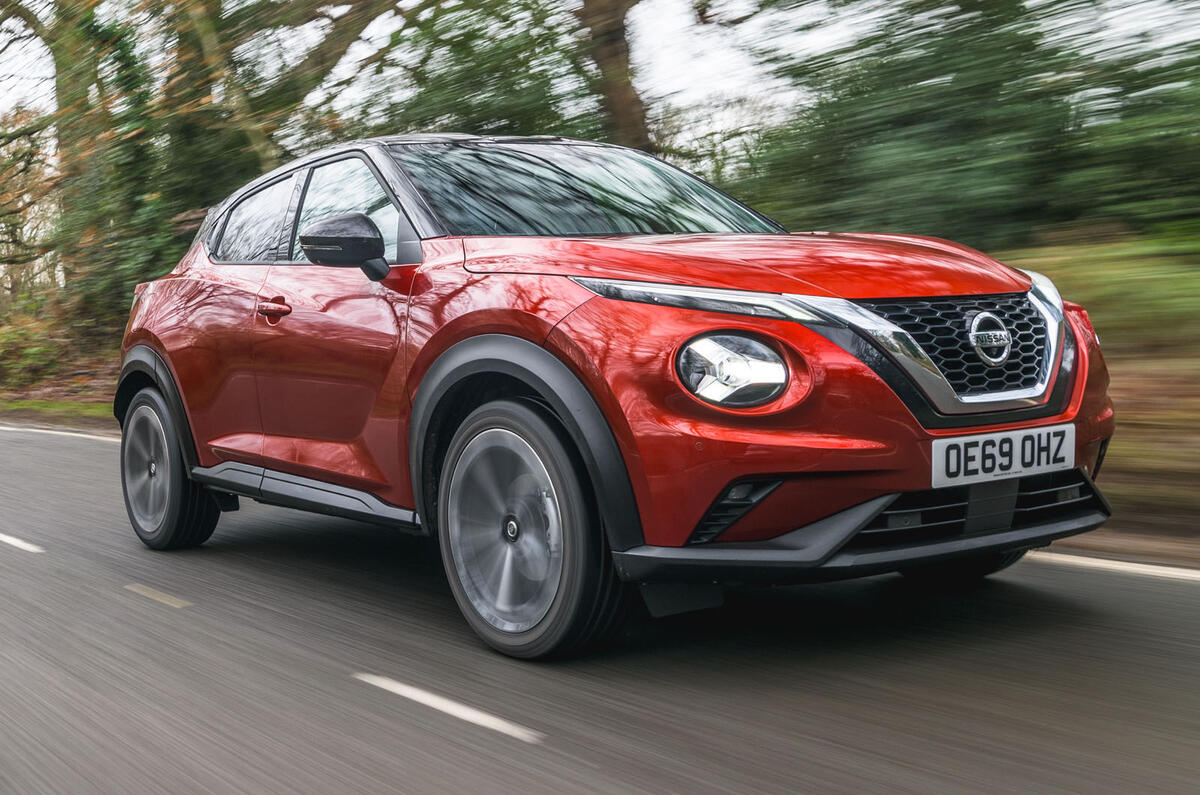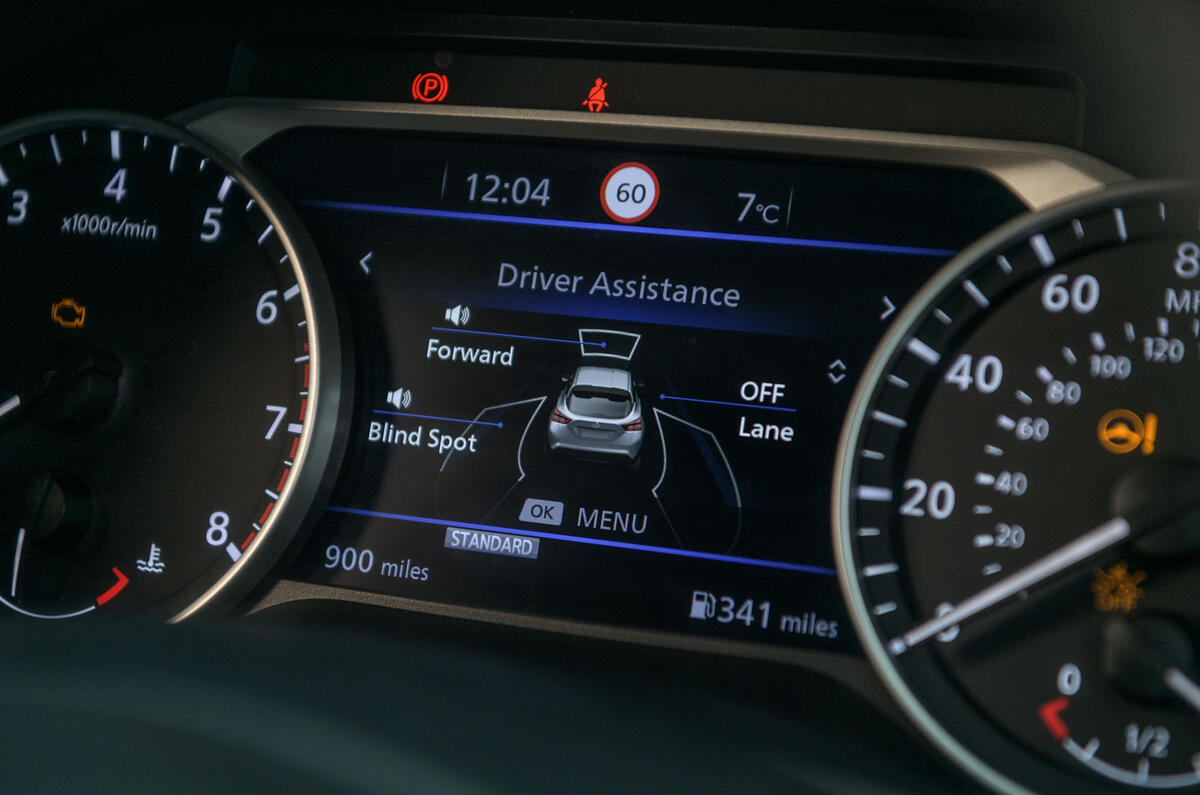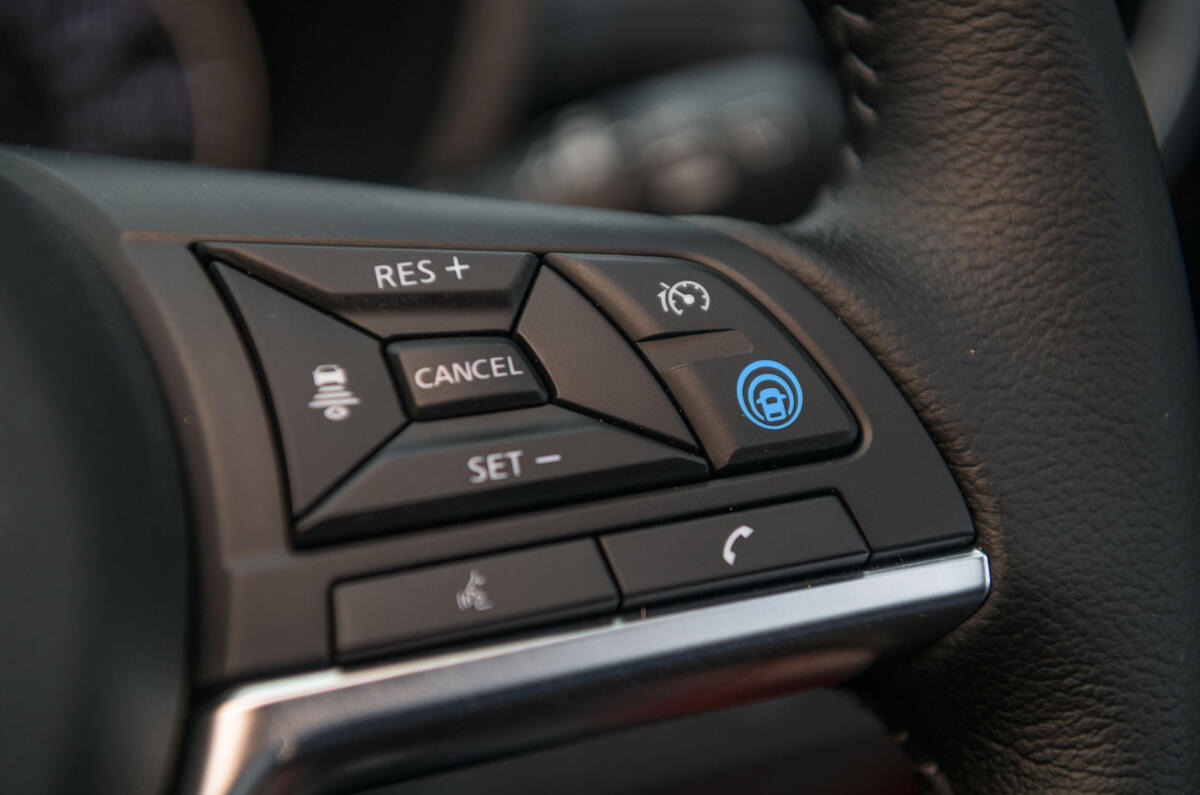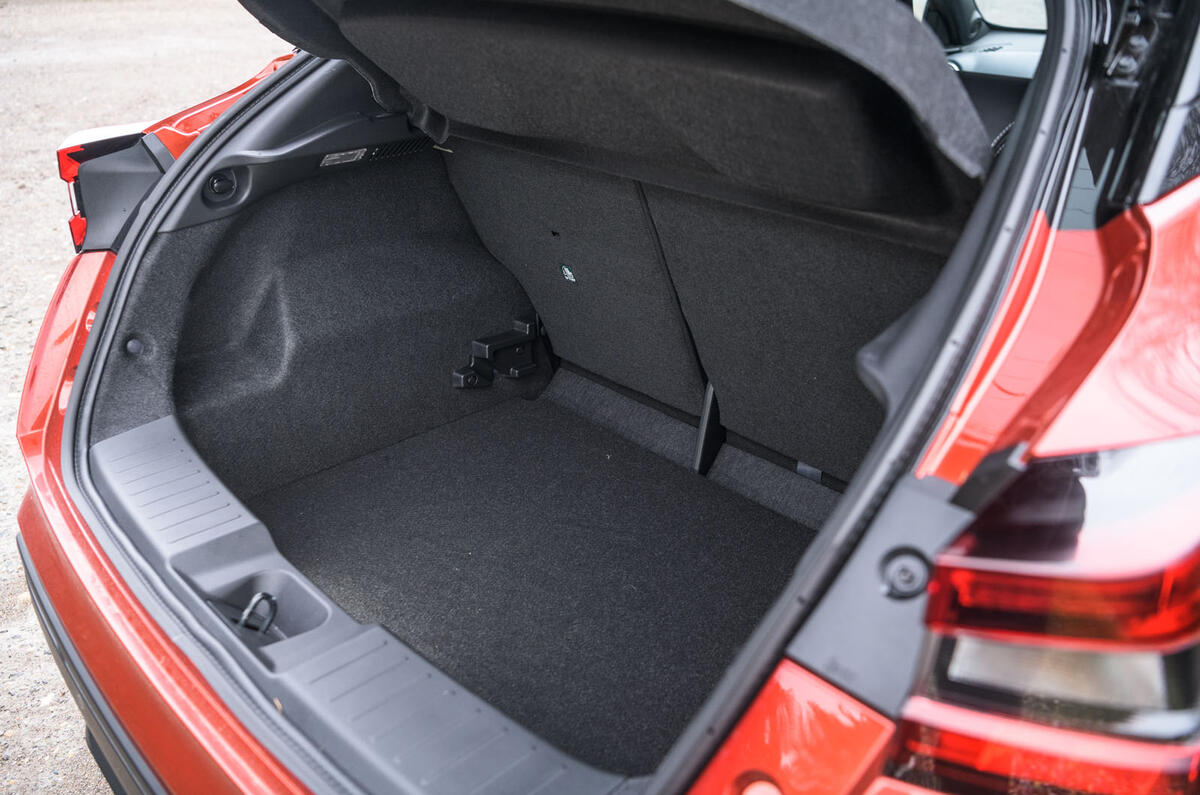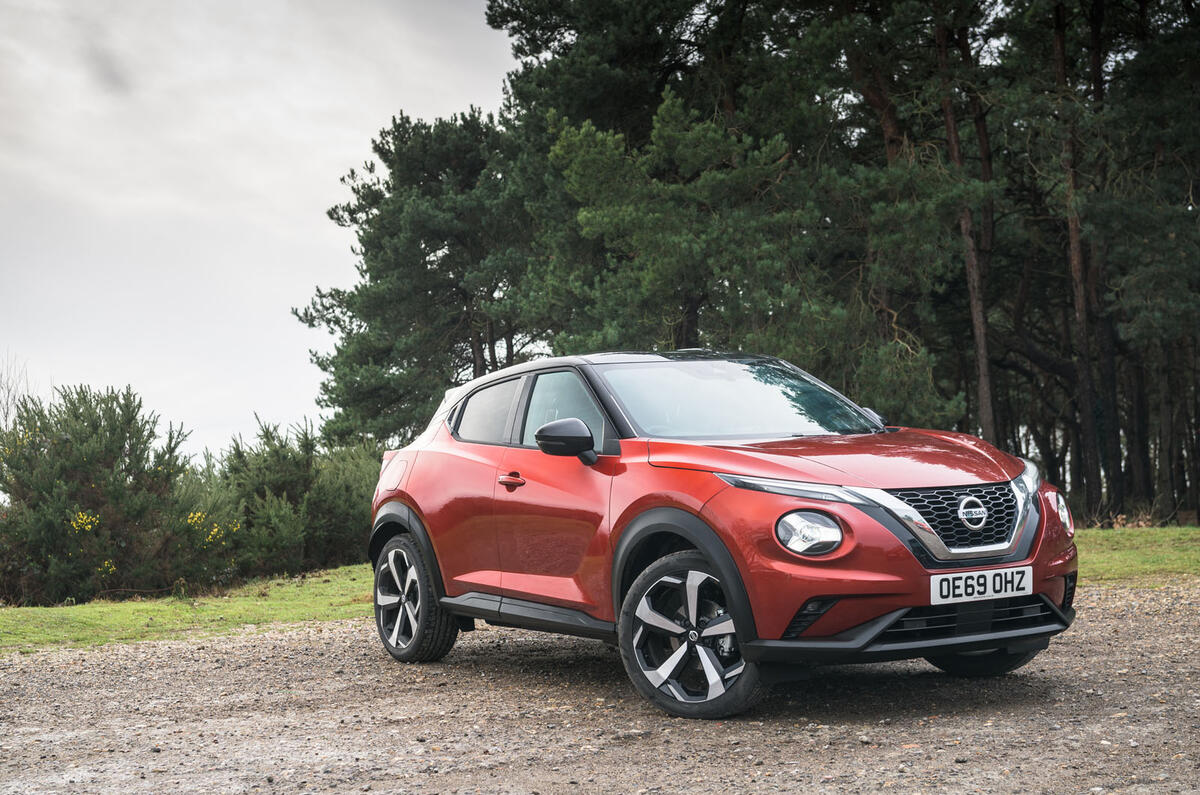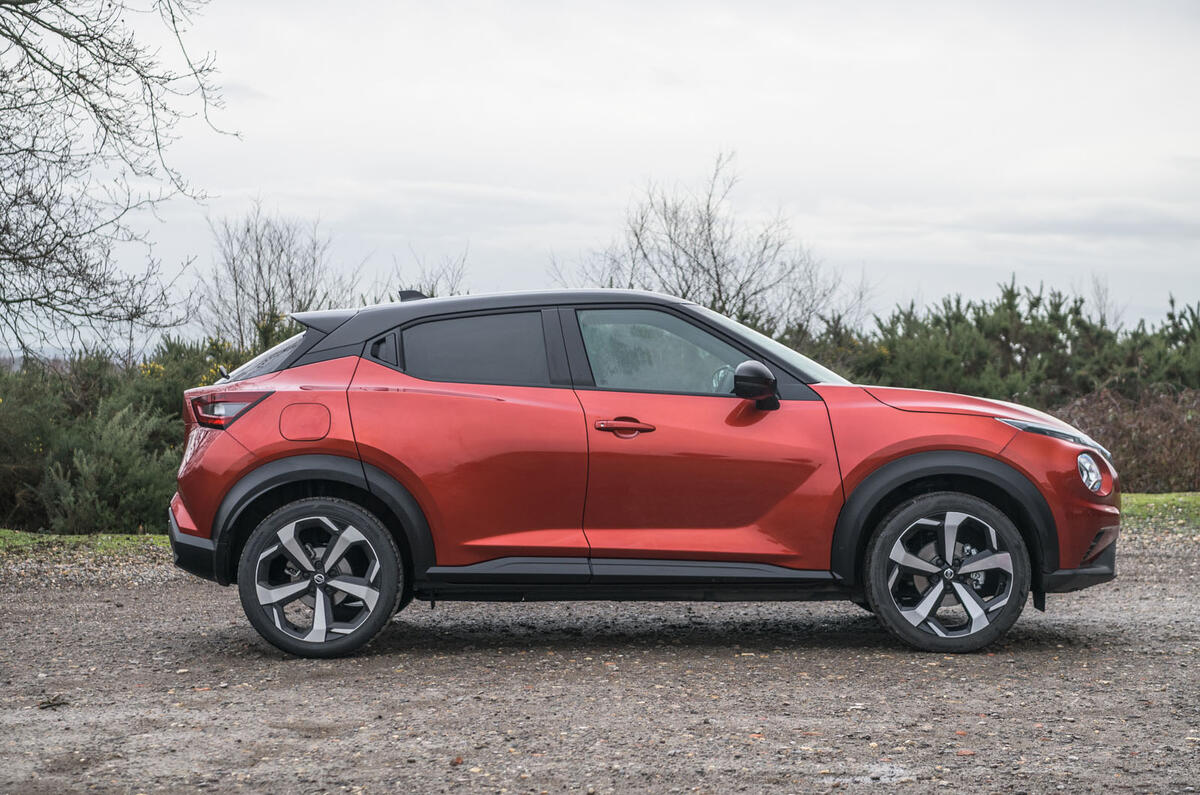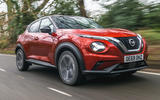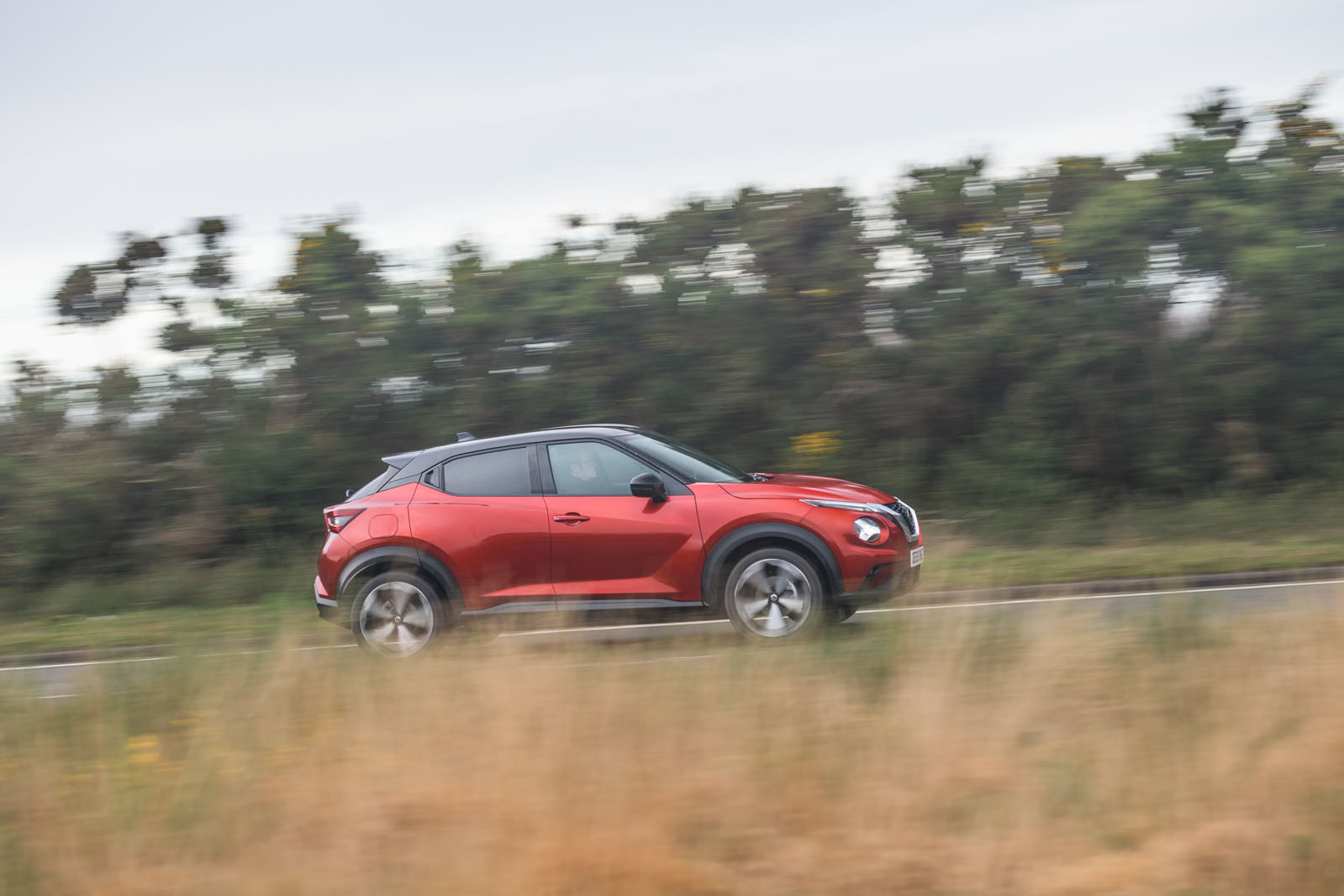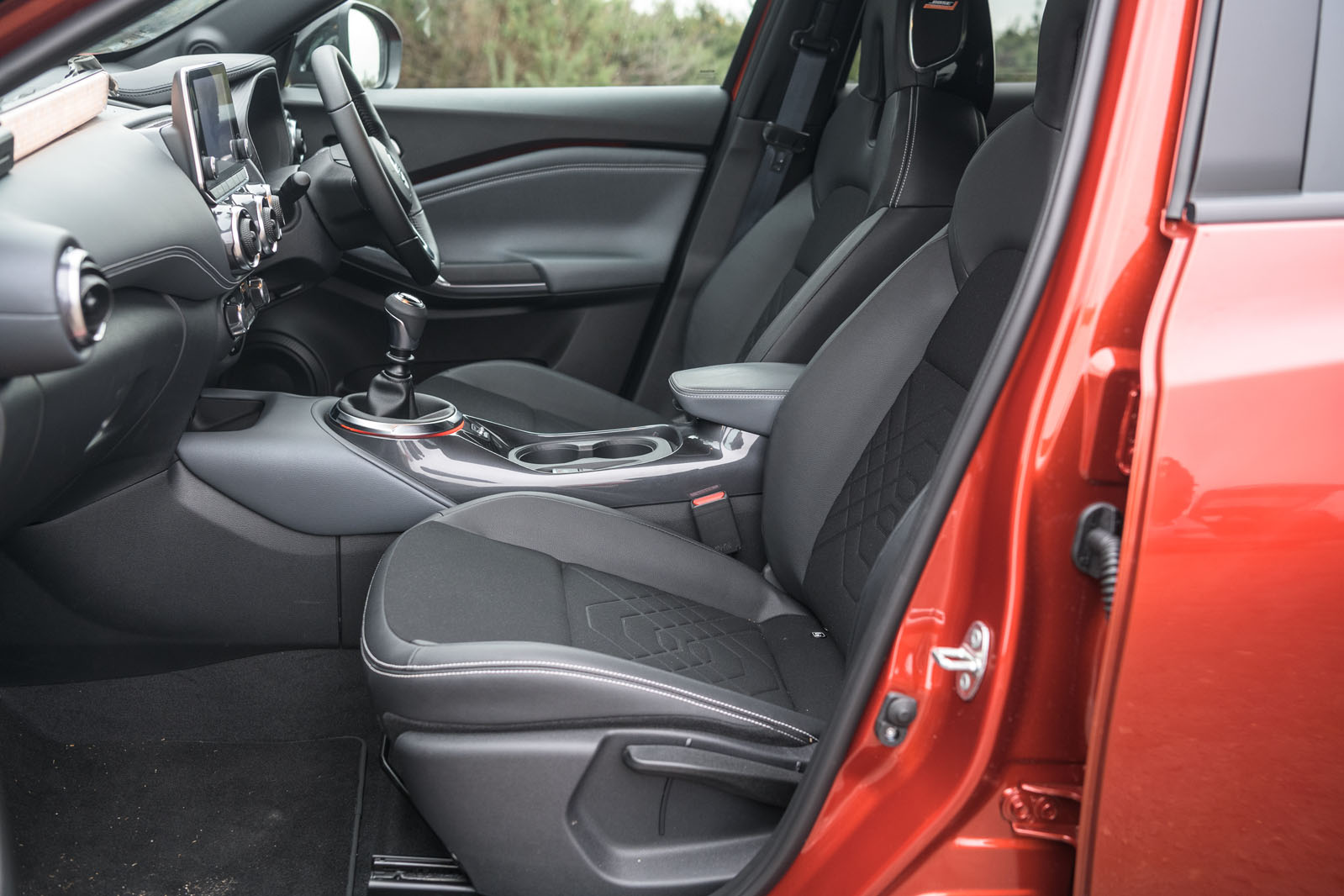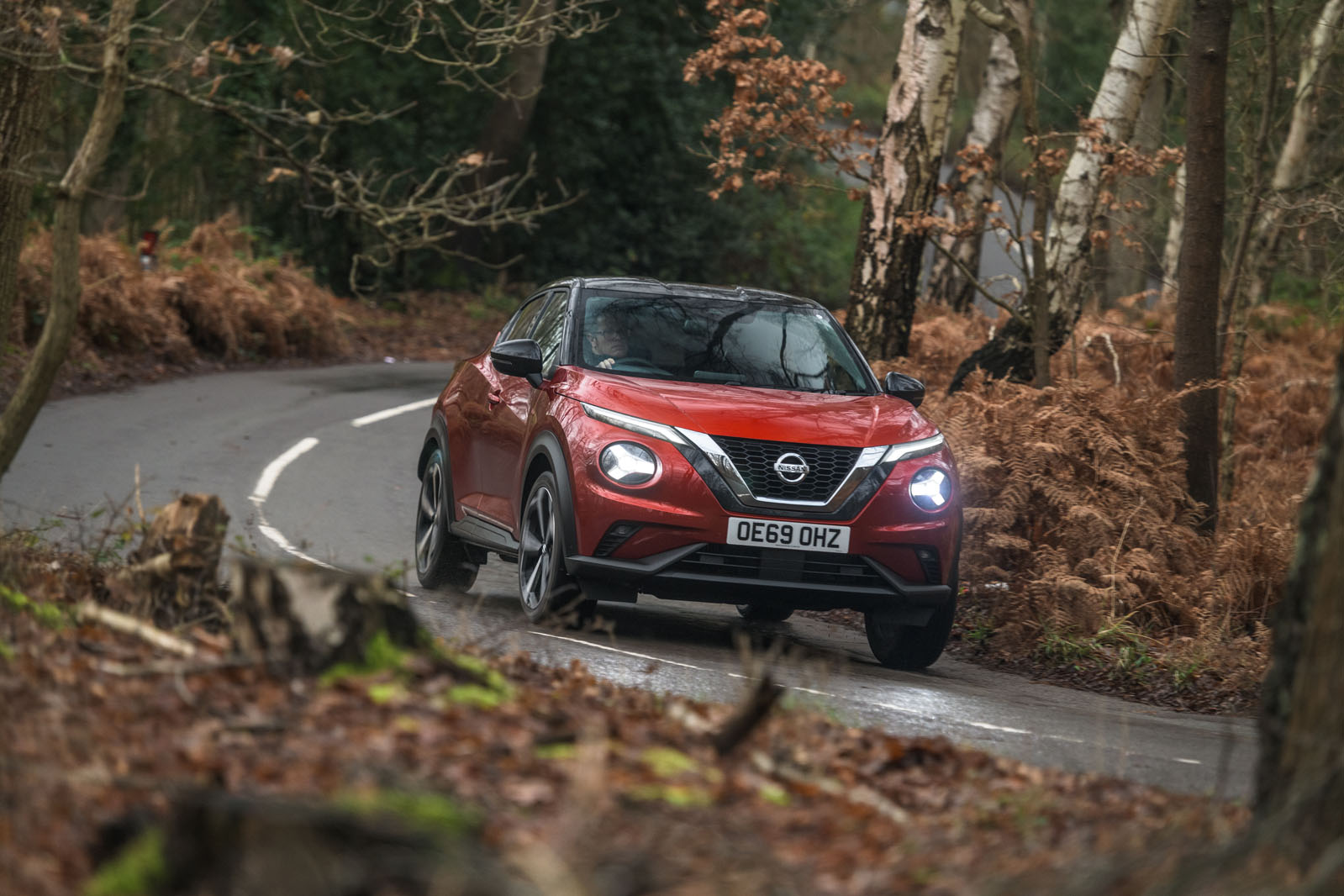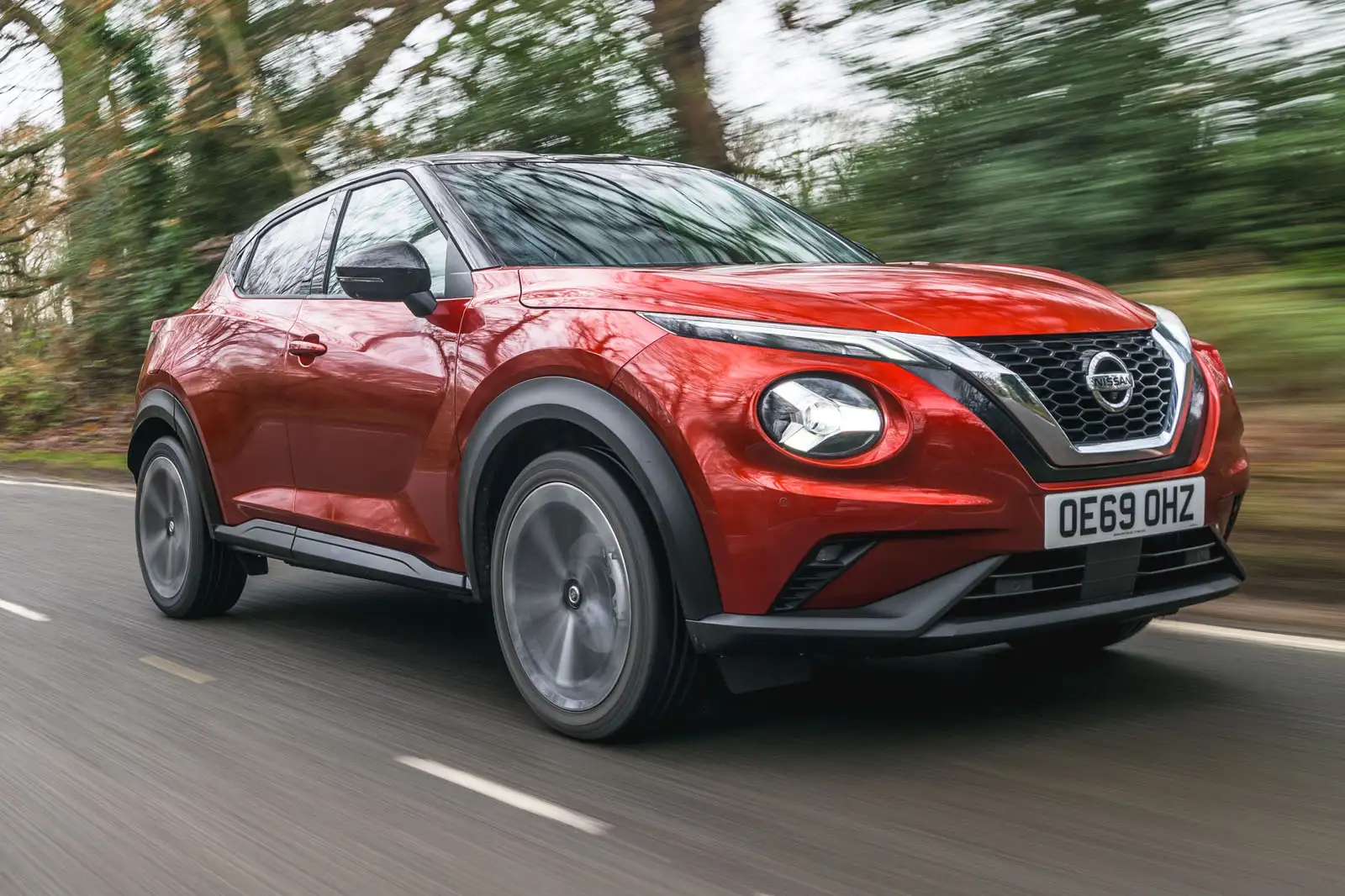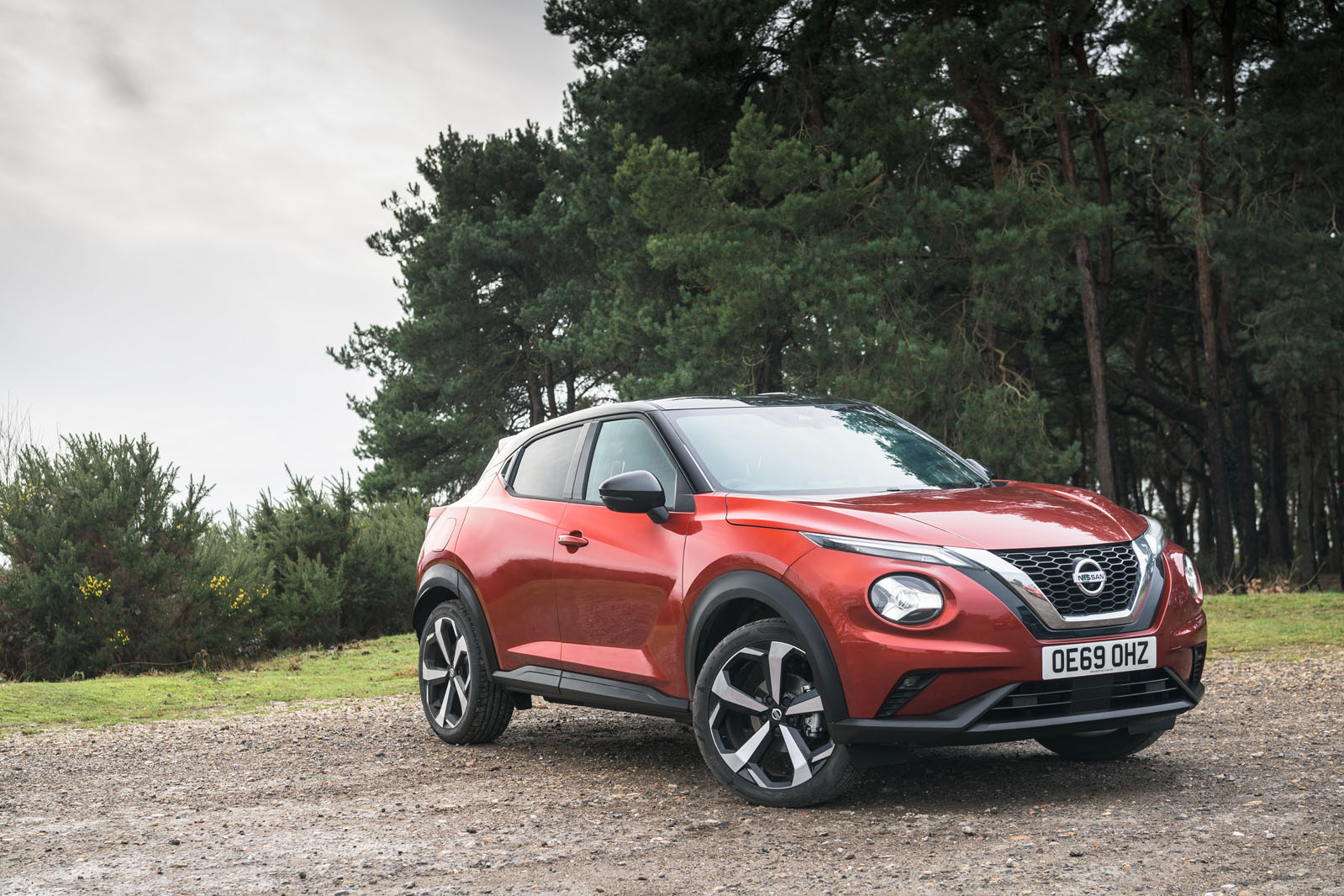The quirkiness and sense of fun of the original Juke’s interior design has been toned down a little this time around and augmented by a pretty clear effort to add some richer material and technological allure. There’s still plenty of visual character and a little bit of fun factor in evidence, and both can be dialled up beyond the level of our test car if you opt for pricier Tekna+ trim.
But the design flair certainly hasn’t been allowed to take over, or to prevent the Juke from delivering passenger space or ambient perceived quality to make it competitive with its rivals.
The oversized, high-contrast centre console that dominated the last Juke’s cabin has been replaced by one of a more ordinary shape and modest volume. The new one is a more discreet design feature, leather-upholstered as it was in our Tekna-spec test car, integrating the car’s starter button and drive mode selector switch and presenting the gearlever within a ring of ambient lighting.
You sit medium high and slightly bent-legged at the controls and pretty typically in a crossover supermini, with easier access and better visibility of the world outside than you’d get in a traditional hatchback. The instruments are analogue dials, with a good-sized digital drive computer screen positioned between them that can display the usual choice of trip computer or in-car entertainment information. The ritziest small crossovers now offer fully digital clocks, of course – but the Juke’s instrument binnacle is far from antiquated and it’s clear, simple and easy to configure to your liking.
Nissan’s use of leather and chromed plastic smacks of an attempt to lift the Juke’s ambience upmarket, which is moderately successful, although perceived quality is a little inconsistent. More impressive is how much extra space has been found inside the car relative to what was a pretty impractical showing previously.
Although the Juke hasn’t been transformed into the best-packaged and most accommodating car in its class, it no longer gets the wooden spoon for second-row occupant room or for boot space. Taller adults can sit line astern now pretty comfortably, whereas they wouldn’t have had a hope of doing so before. The car’s 422-litre boot is respectable for capacity, too – up 20% for volume on the last car, although still down on key rivals – and made accessible by an adjustable-level floor.
Nissan Juke infotainment and sat-nav
Only the very cheapest, Visia-grade Jukes go without a NissanConnect 8.0in touchscreen infotainment set-up. You needn’t venture beyond one-up Acenta trim to get that and it includes smartphone mirroring for both Apple and Android phones, as well as NissanConnect live information services and a rear-view camera – which is no mean offer for a car with an asking price of £19,000.
N-Connecta spec includes TomTom factory navigation with live traffic information and it’s a pretty good system that’s simple to programme and set up and easy to follow – much as most are likely to use it.
You only get the Bose Personal Plus surround audio set-up of our test car if you climb all the way to Tekna grade. It’s not the best reason to spend the extra money, although it does create a convincing sense of width to its surround sound music reproduction.


